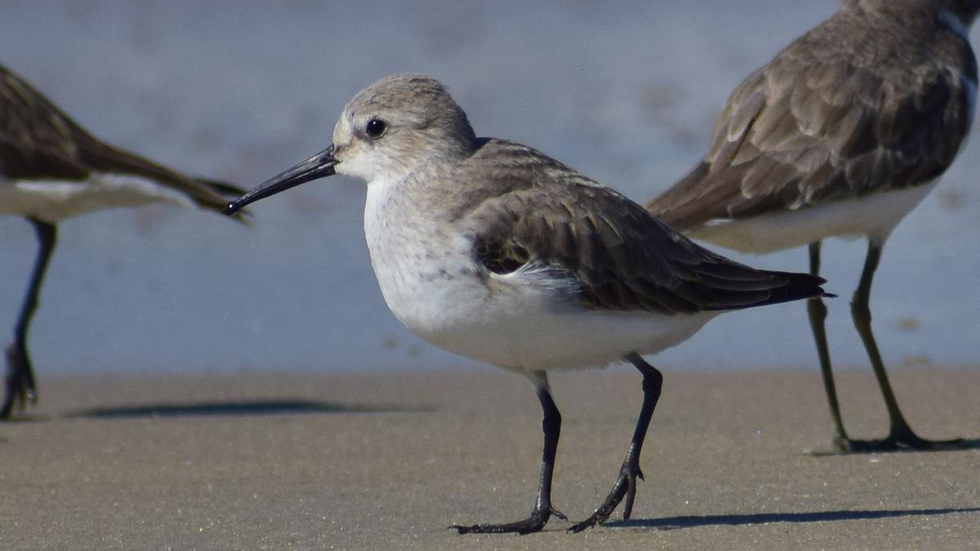About Dunlin:
- It is a small shorebird with a droopy bill and is a fully migratory circumpolar breeder.
- Appearance:
- Dunlins are medium-sized sandpipers with a slightly down-curved black bill.
- Unique feature: During the summer breeding season, they have a large black belly spot and orange feathers on their back and in winter and nonbreeding season, they are all white with a gray back and head.
- A group of Dunlin is known as a "flight," "fling," or "trip."
- Habitat: During the breeding season, they live in coastal tundra areas. In the winter, they live along mudflats, estuaries, marshes and coastlines.
- They spend the summer breeding season in the arctic and subarctic regions, and winter along both coasts of the United States and Mexico.
- Diet: Insects form the main part of the Dunlin's diet on the nesting grounds; they eat mollusks, worms, and crustaceans during the winter and on migration.
- Conservation status
- Threats: It is threatened by habitat loss caused by wetland draining, global warming, and invasive plants, particularly at migration staging and wintering areas.
It is also vulnerable to avian influenza.
